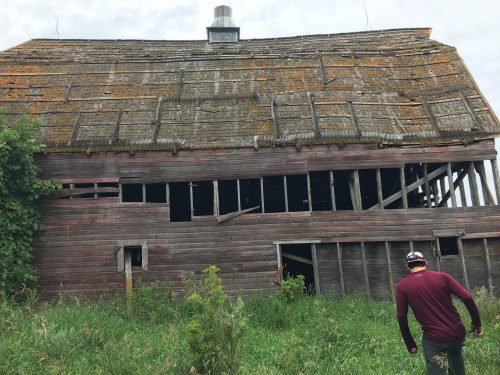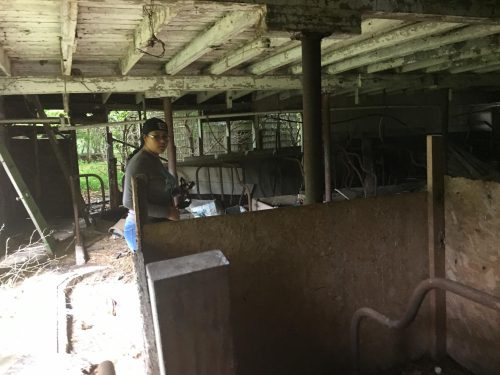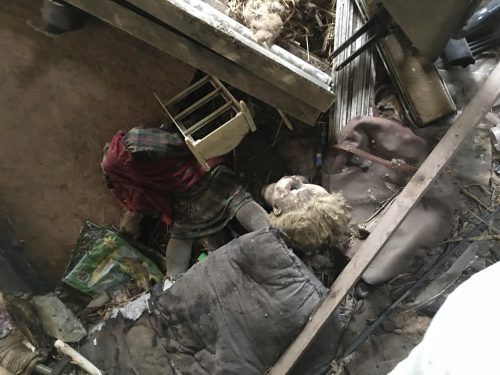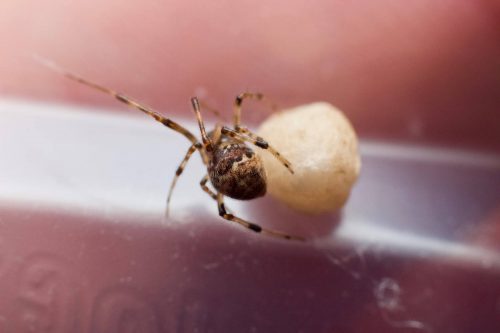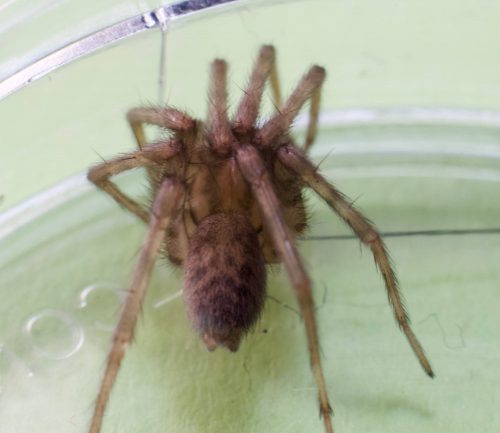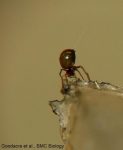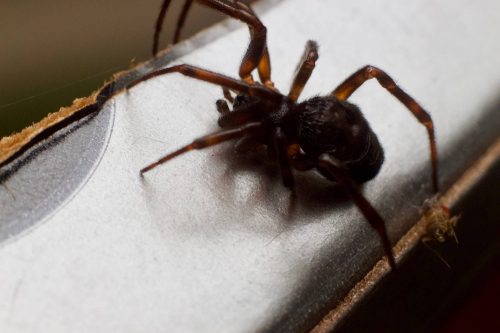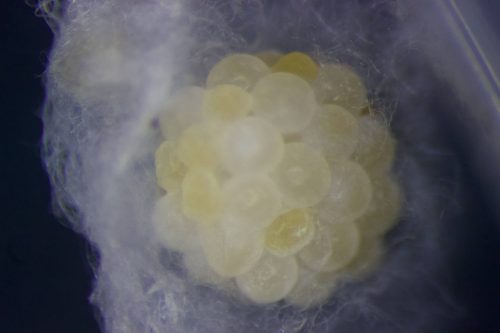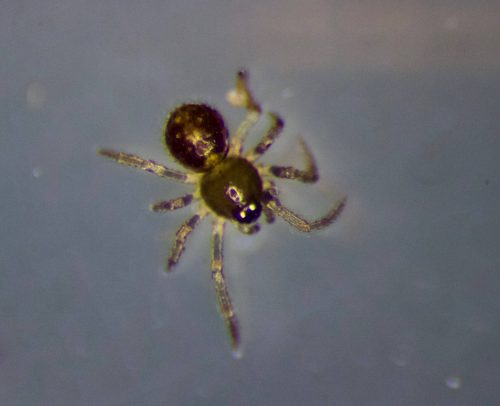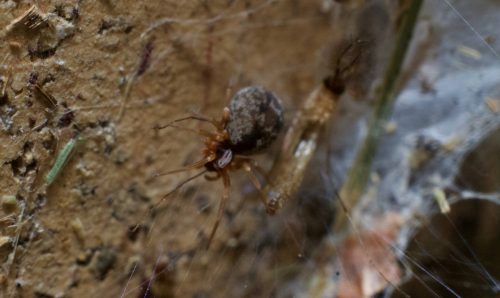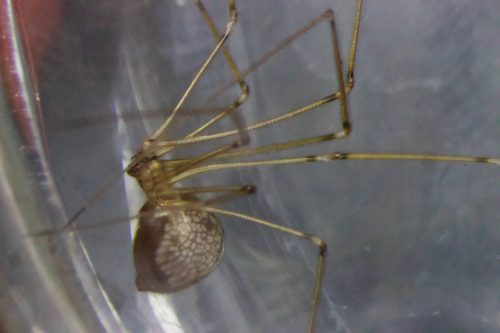We went on another field trip today, to barns in Hancock. I had predicted that we’d find many more orbweavers in barns than in garages and sheds, and that’s tentatively true. We first visited a working barn, one with lots of chickens strutting around, and didn’t see a dramatic difference in the spider populations, though — I suspect that chickens are going to eat any large, bold orbweaver that exposes itself. These barns had the densest cobwebs I’ve ever seen, and lots of hidey-holes for our friends the Theridiidae, so we only saw a scattering of S. borealis and P. tepidariorum.
Then we saw the abandoned, crumbling farm down the road. “Hey, let’s go explore that!”
Preston led the way through the weeds and thistles.
This place had definitely seen better days. The ceiling was falling in, the windows and doors were gone, you could just walk in through the gaps in the walls. The floors were littered with old debris from long-gone residents. It was a sad place.
It was clearly an old dairy farm. Maya found the milking room.
Maybe we should have turned back when we found the rotting, decapitated doll. If this were a video game or a horror movie, that would be a sure sign we were on the path to Hell.
But what we found inside were…

